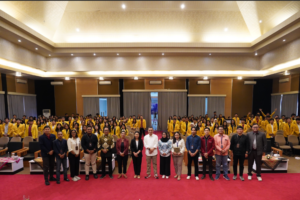The Government Build The Second Toll Road In Bali: Gilimanuk Toll – Perspective From The Academician Side
Denpasar – The Gilimanuk-Mengwi Toll Road, which is currently under development by the government, will become the second toll road after the Bali Mandara Toll Road in Bali Province. The Mengwi – Gilimanuk road that will be built will cover 3 regencies in the province of Bali, namely Jembrana, Tabanan, and Badung Regencies. The government hopes that the construction of the Gilimanuk-Mengwi Toll Road can accommodate vehicles from West to East and vice versa, as well as being an alternative route from Gilimanuk port to the capital city of Bali Province, namely Denpasar. (27/9/2022)
The government, to provide an impact on economic growth from toll road construction, has launched the construction of a stop area that can be used by MSME actors in offering their products, especially products typical of local communities. It is also hoped that this will help provide a tourist attraction to the area crossed by the Gilimanuk – Mengwi toll road later.

From an academician perspective, the Gilimanuk – Mengwi toll road development plan will certainly have various impacts on users and the surrounding community, and this must be a special concern for the government. The Chancellor of the University of National Education Prof. Dr. Ir. Nyoman Sri Subawa, S.T., S.Sos., M.M., IPM., ASEAN.Eng., mentioned.
“The construction of the Gilimanuk – Mengwi toll road must ensure that aspects of the interests of the community around the road will be built, the existence of the toll road will also bring changes from the economic side of the community which of course we all hope to lead to an increase in their economic standard. We appreciate that every discourse held by the government can have a positive impact on the survival of the community,” said Professor Sri Subawa in his interview.
The construction of the Gilimanuk – Mengwi toll road, which is being built by the current government, may hopefully be a solution for the recovery of the economy in the community after being affected by the pandemic for a long time. Towards the recovery of the regional economy, of course, various supporting infrastructures are needed to achieve this, including improving access to logistics transportation from the region.



